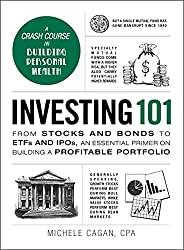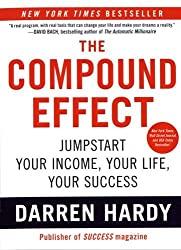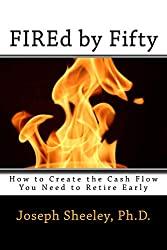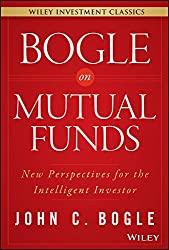
Photo by RODNAE Productions on Pexels.com
" data-orig-size="1880,1253" data-image-title="close up view of chef cutting vegetable" data-orig-file="https://smallivy.files.wordpress.com/2018/10/pexels-photo-10432860.jpeg" data-image-description="" data-image-meta="{"aperture":"0","credit":"","camera":"","caption":"","created_timestamp":"0","copyright":"","focal_length":"0","iso":"0","shutter_speed":"0","title":"","orientation":"0"}" data-medium-file="https://smallivy.files.wordpress.com/2018/10/pexels-photo-10432860.jpeg?w=300" data-permalink="https://smallivy.com/2021/12/10/now-is-the-time-to-catch-a-falling-knife-maybe/pexels-photo-10432860/" alt="" class="wp-image-21262" data-large-file="https://smallivy.files.wordpress.com/2018/10/pexels-photo-10432860.jpeg?w=723" />Photo by RODNAE Productions on Pexels.comWall Street has a lot of sayings developed by traders who learned one lesson or another, usually after losing a great deal of money. One of the bromides is to “catch a falling knife,” usually used in phrases like “He tried to catch a falling knife with that stock and lost his shirt.”
In stock market parlance, to “catch a falling knife” if to buy a stock that is declining rapidly in price with the hopes of buying the stock at the bottom, thereby getting a good price, from which the stock rebounds sharply, leading to a quick profit. As would be the case with trying to catch a real falling knife (picture point side down, razor-sharp, rocketing towards your foot) the maneuver is tricky. If you move too soon, you will be rewarded with a slice in your finger or a point in your palm. If you move to slowly as the handle whizzes by, you’ll miss the knife entirely.
(Note, this site contains affiliate links. As an Amazon Associate I earn from qualifying purchases. When you click on an affiliate link and buy something, The Small Investor will get a small commission for the referral. You are charged nothing extra for the purchase. This helps keep The Small Investor going and free. I don’t recommend any products I do not fully support. If you would like to help but don’t see anything you need, feel free to visit Amazon through this link and buy whatever you wish. The Small Investor will get a small commission when you do, again at no cost to you.)

Get free shipping on many items you buy from Amazon through Amazon Prime. Try Amazon Prime 30-Day Free Trial
Buying falling stocks is a form of value investing, in which an investor buys stocks that he believes are undervalued and holds them until he believes they are fairly valued or overvalued. The general premise is that an undervalued stock will eventually return to its fair value, and that undervalued stocks will do better than overvalued stocks. Value investing is based on the “buy low, sell high” philosophy. This strategy has proven itself at various points in the past, although in recent years the momentum investing approach (buy high, sell higher) has actually been more profitable.




Find Books on Investing from Amazon
The trouble with buying declining stocks is that stocks that are falling rapidly in price are usually falling for a reason. Looking at the fall in oil stocks starting around 2016 and then accelerating during the government-directed shutdown in 2020 during the pandemic, oil stock fell through the floor as the US was pumping out oil and gas like crazy and no one was driving. At one point, the price of oil went negative as producers were giving the stuff away. There was speculation over whether these stocks would ever recover, even though a few years before places like North Dakota were becoming wealthy from oil production.
Because stock investors hate uncertainty, the price of oil stocks continued to fall even after they became insanely cheap compared to historic prices. (Even if the news is bad, if you know the numbers you can value a stock. If there is uncertainty no one knows how to value the stock and therefore are afraid to step in and buy). Eventually oil stock prices did hit a bottom in March of 2020 and start to rise after the Biden Administration restricted oil production and mobility, causing oil prices to shoot up again and taking the price of these companies back up with them, but there were a lot of false moves upwards along the way.
The only time to try to catch a falling knife is when the whole market is declining, and then to pick up shares of a stock you have determined to be a good long-term buy and were accumulating anyway. In this type of situation, good stocks and bad tend to decline, so your great company will fall along with everything else. When the markets turn around, the great stocks are the first to shoot back up, providing once-in-a-lifetime returns.

(If you enjoy The Small Investor and want to support the cause, or you just want to learn how to become financially independent, please consider picking up a copy of my new book, FIREd by Fifty: How to Create the Cash Flow You Need to Retire Early This is the instruction manual on how to become financially independent.)
To determine if the whole market is declining, rather than just your stock, look at the mid-term charts (maybe 6-month time span) of several stocks. If they all look about the same, with head and shoulder patterns and then a downward trend, the whole market is falling (the current market is like this). If only the stock you are interested in is falling, it is best to stay away because there is probably something other know that you don’t (yet).
So, this might be a good time to add some cash that you’ve had sitting on the sidelines. If you don’t have any cash to invest, it may be time to raise some cash through extra work or by cutting back on luxuries. You always want to be investing, but especially when the markets are falling as a whole. Realize though that you are very unlikely to catch a bottom. It will probably continue to fall after you have bought in. But don’t let this discourage you. Know prices will be higher in the future.
Learn how to use mutual funds from the founder of Vanguard:


The way to catch the knife is to wait for the initial decline to start to slow and flatten out and then buy about 1/3 of the number of shares you will eventually buy. Then, wait for the rise and hope it is a bear-market, “suckers” rally. If it is, wait for the stock to decline beyond the previous low and then wait until it begins to flatten again. Buy the second 1/3 here. Repeat one more time if the market cooperates and there is a third downturn. If the stock moves up and crosses the original high (the “head” of the “head and shoulders” pattern) wait for the subsequent low and buy the rest of the shares because the fall is probably over.
After you are all in, just sit back and wait. The stock may fall farther, but by buying in stages you lower your cost basis and also are aided psychologically. As the stock moved to new lows, since you were hoping it would continue to decline, you don’t get the self-doubt that you get when you buy the full position at once and see the price continue to decline. It is almost impossible to catch the exact bottom, but this way you had three tries. Eventually the stock should recover and set a new all-time high if you picked the right kind of stock, so whether you got the exact bottom or not won’t really matter.
Happy catching!
Join the conversation and help make this blog more exciting! Please leave a comment. Also, if you have an investing question, email [email protected] or leave the question in a comment.
Disclaimer: This blog is not meant to give financial planning advice, it gives information on a specific investment strategy and picking stocks. It is not a solicitation to buy or sell stocks or any security. Financial planning advice should be sought from a certified financial planner, which the author is not. All investments involve risk and the reader as urged to consider risks carefully and seek the advice of experts if needed before investing.
